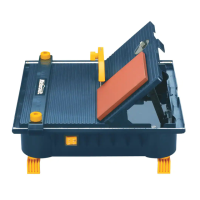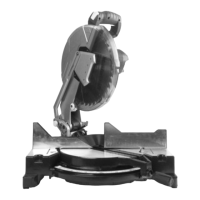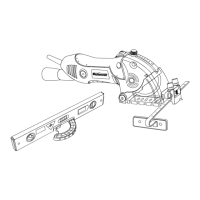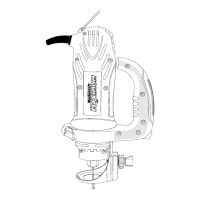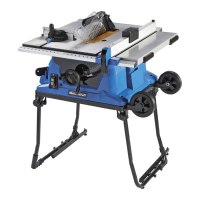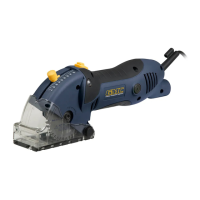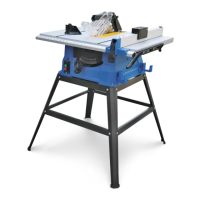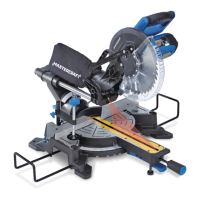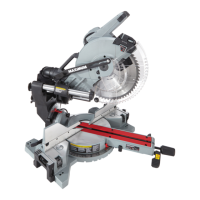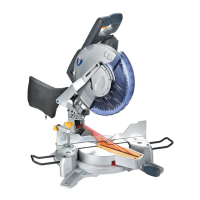BLADE SELECTION
There are many different types of blades with differing tooth configurations, tooth counts
and materials. Some of the more common types are shown below.
CAUTION! ABRASIVE AND METAL CUTTING BLADES MUST NOT BE USED
WITH THIS SAW. This saw was not made to cut metals or masonry materials. Doing
so may result in injury. It will also void the warranty.
ALL BLADES MUST:
1. BE RATED AT 5300 RPM OR HIGHER
2. HAVE A 5/8" ARBOR HOLE
3. BE NO LARGER THAN 10" IN DIAMETER
Smaller diameter blades may be used. However, they will result in a reduced cutting depth.
Combination blades
Tend to be general purpose blades
Work fairly well in most applications
Somewhat rough cutting
Crosscut blades
Designed primarily for crosscutting
Somewhat smoother than combination blades
Rip blades
Used for ripping
Very good for thick materials
Very rough if used for crosscutting
Plywood blades
Smooth cutting in both rip and crosscut applications
Good for thin wood as well as plywood
Set-tooth type is more economical than hollow ground type tooth
Not limited in cutting depth
Planer blades
Generally are hollow ground
Very smooth cuts in thin material
Limited depth of cut due to hollow ground construction
Not recommended for rip cuts
Carbide tipped blades
Stay sharp much longer
More expensive than all-steel blades
Available in all types listed above
Carbide is brittle and must not be used on any material that may contain nails, screws, etc.

